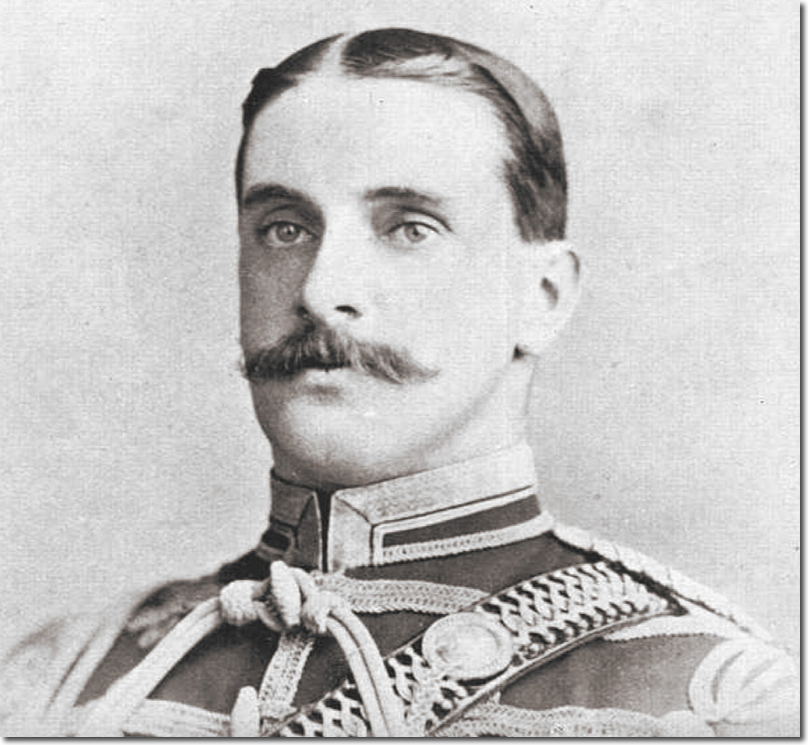|
|


|
|
Harvey Alexander was born on 3 June 1859, the son of Captain Caledon Du Pré Alexander and Caroline Ewing. He was commissioned from the Herefordshire Militia on 24 Jan 1880 into the 10th Hussars, joining the regiment as a second lieutenant at Rawalpindi. He was promoted to lieutenant on 1 July 1881 and sent to the cavalry depot at Canterbury in 1883 so was not with the regiment when they fought at El Teb and Tamai. He was a captain on 16 Mar 1889 and the next year appointed adjutant in the yeomanry for 5 years. He resumed service with the 10th in Feb 1895, promoted to major on 2 Jan 1897 and lieutenant-colonel on 3 Aug 1900. He commanded that part of the regiment that sailed on the ill-fated ‘Ismore’ to South Africa. A Squadron and part of B Squadron with a battery of artillery embarked at Liverpool on 3 Nov 1899 while the rest sailed on the ‘Columbia’. Eighteen horses died in the rough seas and the ship sailed on only to hit a reef at Paternoster Point, a mile from shore. There was trouble getting the lifeboats going but with help from the shore they made it to dry land as the ship sank. Major Alexander set a good example of courage and coolness which saved the situation from panic, and was the last man to leave the ship. Their troubles were not over when they reached land. That area of the coast was inhospitable and Alexander managed to lead them on a difficult march to a re-embarkation point. They finally rejoined the regiment on 21 Dec 1899.
They had missed the first action on 13 Dec but on 31 Dec the 10th marched from Arundel to Rensburg. There was a battle at Colesberg which lasted several days and Alexander was wounded by rifle fire on 4 Jan 1900. He then returned and was engaged at every action until he was wounded again at Krantz Kraal, this time severely. He returned to duty quite quickly and was with the regiment for the occupation of Pretoria and the Battle of Diamond Hill. He replaced Colonel Fisher-Childe as CO of the regiment on 3 Aug 1900. The rest of the war was spent in chasing De Wet, Delaray and Beyers, involving forced marches, avoiding sniper fire and coping with exhaustion. The 10th formed part of a column that operated over a wide area in 1901. On 11 Oct the Commandant Scheepers was captured after an attack by an overwhelming force of Boers was thwarted. On 13 Oct Colonel Alexander went on leave to England but returned to South Africa and was given command of a line of blockhouses. The regiment then travelled to Malmesbury in 1902 where Alexander relinquished command and was appointed Adjutant-General in Jersey. This was his last posting before retiring from the army on half-pay. He married Mildred Maria Prideaux-Brune on 17 April 1890. They had two sons and a daughter. They lived in Dorset in his retirement. The account of his service with the regiment is told in the 10th Royal Hussars Gazette of January 1910 which says, ‘In times of peace his kindness and consideration for his men, also that of Mrs Alexander for the married families, will ever be a dominating memory of all ranks of his time.’ He died in March 1936. |
Regimental Details | Commanding Officers
Armed Forces | Art and Culture | Articles | Biographies | Colonies | Discussion | Glossary | Home | Library | Links | Map Room | Sources and Media | Science and Technology | Search | Student Zone | Timelines | TV & Film | Wargames